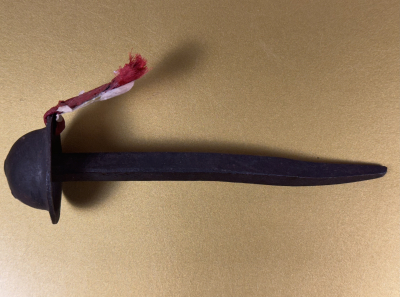Relics that are claimed to be the Holy Nails with which Jesus was crucified are objects of veneration among some Christians, particularly Roman Catholics and the Eastern Orthodox. In Christian symbolism and art they figure among the Arma Christi or Instruments of the Passion, the objects associated with the Passion of Jesus. Socrates of Constantinople, The fifth-century Byzantine Church historian, wrote in his Ecclesiastical History, which was finished shortly after 439, that after Constantine was proclaimed Caesar and then Emperor, he ordered that all honor be paid to his mother Helena, to make up for the neglect paid her by her former husband, Constantius Chlorus. After her conversion to Christianity, Constantine sent her on a quest to find the cross and nails used to crucify Jesus. A Jew called Judas (in later retellings further called Judas Cyriacus) led her to the place where they were buried. Several miracles were claimed to prove the authenticity of these holy items, and Helena returned with a piece of the Cross and the Nails.
The Basilica of the Holy Cross in Jerusalem (Basilica di Santa Croce in Gerusalemme) is a Roman Catholic basilica and titular church in Rome, Italy that is considered one of the Seven Pilgrim Churches of Rome. According to Christian tradition, the basilica was consecrated circa 325 to house the relics of the Passion of Jesus Christ brought to Rome from the Holy Land by Empress Helena, mother of Roman Emperor Constantine I. Several famous relics are housed in the Cappella delle Reliquie of the Basilica, including a significant part of the Titulus Crucis; two Holy Thorns of the Crown of Thorns; a fragment (the spike) of the Holy Nail; the index finger of St. Thomas; and three relics from the Wood of the True Cross.







 Change language to English
Change language to English